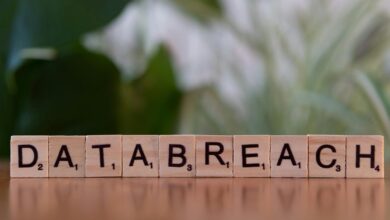Trace Unknown Caller Number: 3314539355, 3322207121, 3331902178, 3332699094, 3333459504, 3334939363

Tracing unknown caller numbers can be a complex task, especially with the rise of telemarketing and scam calls. Numbers such as 3314539355 and 3322207121 may be linked to various sources, from legitimate businesses to fraudulent schemes. Understanding the context of these calls is crucial. Various tools and methods exist to identify these callers, but their effectiveness can vary. The implications of engaging with unknown numbers warrant careful consideration.
Understanding Unknown Caller Numbers
Although the phenomenon of receiving calls from unknown numbers is increasingly common in the digital age, understanding the implications and characteristics of these calls is crucial.
Caller identification strategies are essential for analyzing unknown calls, enabling individuals to discern potential threats or opportunities.
Employing technological tools and databases enhances unknown calls analysis, fostering informed decisions and promoting personal freedom in communication practices.
Common Reasons for Unsolicited Calls
Unsolicited calls frequently arise from a variety of sources, each with distinct motivations.
Commonly, telemarketing strategies drive these communications, aiming to promote products or services.
Additionally, scams and phishing attempts exploit personal information, further contributing to unsolicited calls.
Organizations may also engage in market research, seeking consumer feedback through intrusive calls, underscoring the diverse reasons behind these unwelcome interruptions.
Methods to Trace Unknown Callers
Tracing unknown callers can be effectively achieved through various methods, notably online reverse phone lookup services and dedicated mobile applications.
Online platforms allow users to input phone numbers and receive information regarding the caller’s identity, while mobile apps often provide additional features such as call blocking and spam alerts.
Both approaches leverage extensive databases to enhance caller identification accuracy and user experience.
Online Reverse Phone Lookup
Numerous individuals seek effective methods for tracing unknown callers, and online reverse phone lookup services have emerged as a popular solution.
These platforms utilize extensive caller databases to perform a reverse phone search, enabling users to identify unknown numbers efficiently.
Mobile Apps for Tracing
Mobile applications have gained traction as an alternative to online reverse phone lookup services for identifying unknown callers.
These apps often include features such as caller identification, spam detection, and user-generated reports.
Users are advised to follow mobile safety tips, such as reviewing app permissions and avoiding suspicious applications, to enhance their privacy while utilizing these tools effectively for unknown caller tracing.
Tools and Apps for Caller Identification
Caller identification tools and applications have revolutionized the way individuals manage incoming calls from unknown numbers. Utilizing caller identification strategies combined with extensive phone number databases, these tools provide users with instant access to caller information.
| Feature | Description |
|---|---|
| Caller ID | Displays name and location of the caller |
| Spam Detection | Identifies and blocks known spam numbers |
| User Reviews | Insights from community feedback |
Protecting Yourself From Telemarketing Scams
The rise of telemarketing scams has instilled a sense of vulnerability among consumers, necessitating proactive measures for protection.
Enhanced scam awareness is crucial; individuals should educate themselves on common tactics employed by scammers.
Caller verification techniques, such as cross-referencing numbers and utilizing call-blocking apps, can mitigate risks.
Reporting Unwanted Calls and Spam
Reporting unwanted calls and spam serves as a critical component in the fight against telemarketing fraud and harassment.
Effective strategies include:
- Utilizing spam reporting features on mobile devices.
- Registering numbers with national Do Not Call lists.
- Implementing call blocking technologies.
- Educating others on identifying and reporting spam.
These actions empower individuals, enhancing their freedom from intrusive communications and contributing to broader consumer protection.
Conclusion
In a world increasingly dominated by technology, tracing unknown callers is akin to navigating a dense fog—challenging yet essential for clarity and safety. By utilizing reverse phone lookup services and caller identification tools, individuals can cut through the uncertainty surrounding unsolicited calls. Armed with knowledge, one can make informed decisions and shield themselves from potential scams. Ultimately, understanding and addressing these unknown numbers empowers individuals, transforming fear into confidence in their communication landscape.




